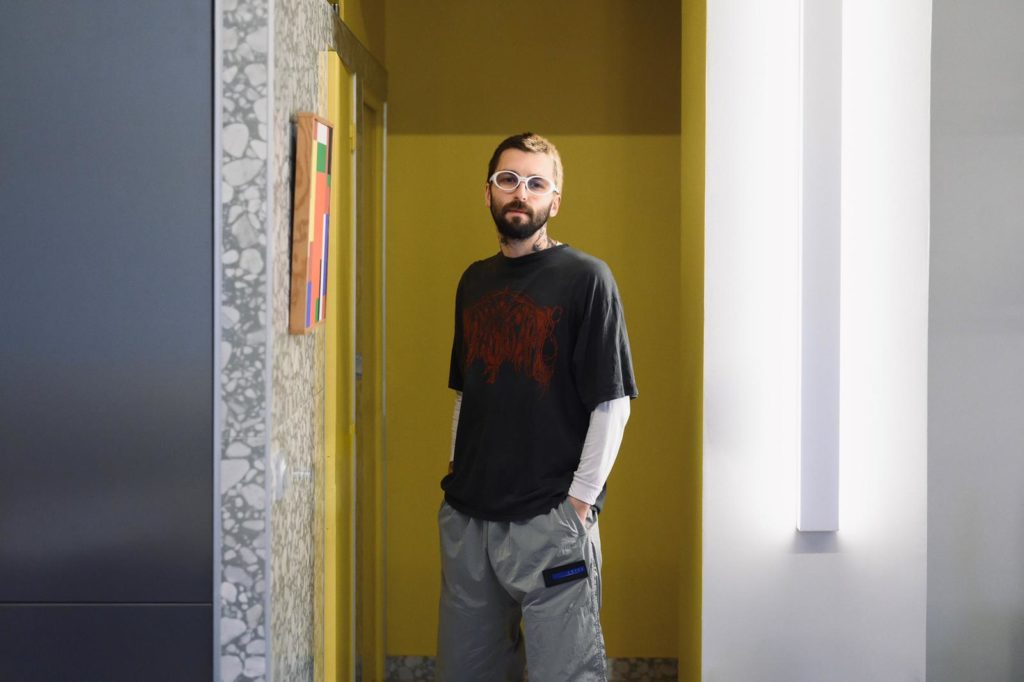“Colour is at the centre of my work”, confides Alexandre Benjamin Navet. The artist, who has seduced people with his flamboyant canvases with a childlike innocence, is multiplying his collaborations: he has signed a collection of carpets and rugs for Codimat, taken over 5th Avenue in New York City at the request of Van Cleef & Arpels, transformed the courtyard of the Hôtel de Crillon into a Yacht Club, reinvented the facades of the Hôtel des Arts in Toulon and imagined window displays for Hermès Petit H.
Although he trained as a designer at the Ensci Les Ateliers school, drawing remains his preferred means of expression. On the occasion of his next exhibition, a Carte Blanche proposed by the National Assembly for which he has imagined five monumental sculptures, vases assembled in the form of totems, the Parisian talks about his love of pigments, the artists who have marked him and, of course, the challenges he has taken up to complete this project. To be discovered in the Palais Bourbon for a period of three months from 22 March 2023.































